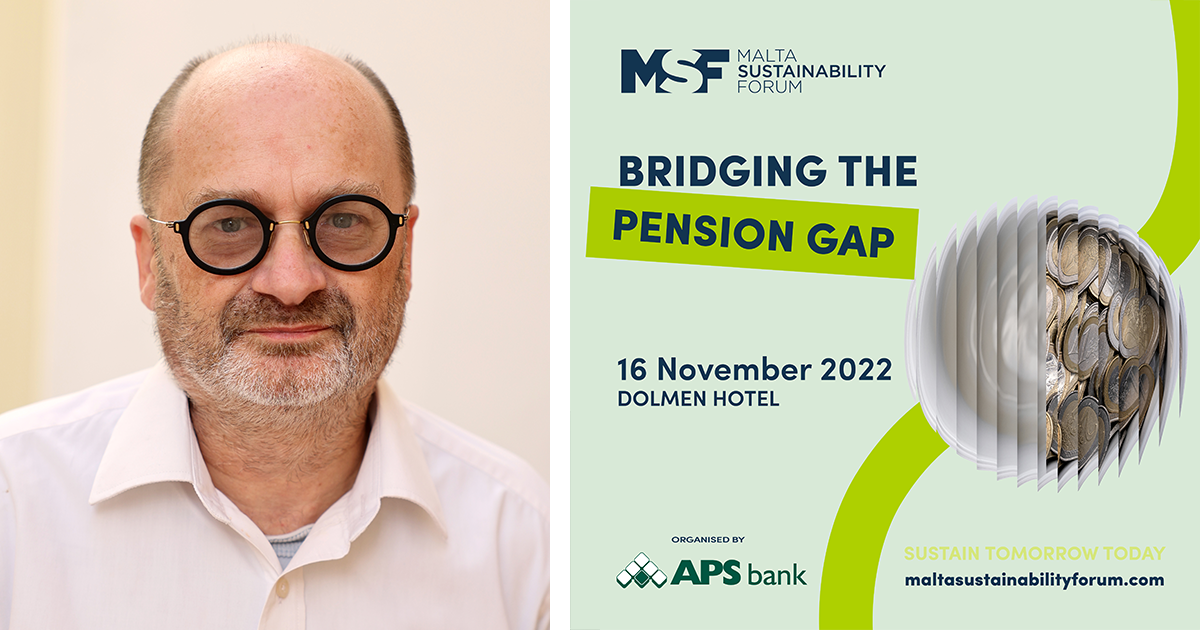Despite the financial incentives offered to employers in Malta to introduce Voluntary Occupational Retirement Pension Schemes (VORPS) in their workplaces, uptake has, so far, gained no traction.
In tax base year 2021, there were only 1,685 members enrolled in VORPS – a mere 12.3% of whom were in the 19-29 years age cohort.
The uptake in voluntary Personal Pensions Plan (PPP) products, that have been available in Malta since late 2015, complemented by an attractive fiscal incentive (a 25% tax credit, on an annual contribution of up to €3,000) is similarly lagging.
During the same tax base year (2021), there were 13,672 PPP members – with a meagre 9.1% in the 19-29 years cohort. Furthermore, 38.1% of the 13,672 PPP members are 45 years and over, suggesting that a significant part of the schemes constitute ‘substitute’ savings, and not ‘new’ savings.
These figures seem to indicate that people are shifting savings from bank deposits with quasi no return to pension schemes.
The low take-up in PPPs suggests that in Malta, similar to other jurisdictions, people tend to take decisions on long-term financial plans without sufficient knowledge of the options available and the likely outcomes of such decisions.
Automatic enrolment (AE) is a clever solution to bridge this gap. For example, many people are not motivated to start a private pension as the benefit of doing so is not immediately enjoyed. Even if a person believes that becoming a member of a VORPS or PPP is important to them, they often delay taking action, as more immediate and pressing matters require their attention. The same inertia that propels a person to procrastinate enrolling in a VORPS, then restrains them from opting out once enrolled. AE schemes, such as those introduced in New Zealand (Kiwi Saver) and the United Kingdom (Workplace Pension), show that these are successfully meeting their objectives of engaging, and retaining over time, individuals to save for their retirement.
Given the local controversy that has surrounded mandatory second pensions since 2004, the question arises whether Malta’s political and social climate is conducive to the introduction of AE, as a vehicle to address pension income adequacy. The answer is yes - on certain conditions. AE VORPS can be introduced locally and be successful so long as they are designed to carefully address the concerns raised by stakeholders when the introduction of a mandatory second pension was rejected in 2006.
I argue that for an AE Pension Scheme to work within Malta’s social and political milieu, it should be based on a number of critical design elements. Some of these design principles are discussed hereunder.

01. Targeted audience: The AE scheme targets middle income earners. The Maximum Pensionable Income (MPI) for persons born in or after 1962, is quasi €26,000 in 2022. The maximum pension entitlement is 2/3 of this, which amounts to €17,300 per annum. A person with a basic wage of €30,000 whilst in employment will experience a significant drop in income during retirement. AE, therefore, should target persons whose basic wage is above the MPI.
02. Exempting vulnerable groups: Financial capability is a central social policy concern, as lack of financial knowledge, ability, opportunity and assets contribute to poverty and inequality. Research shows that the priority with vulnerable groups should be more focused on providing them with the knowledge and education for them to manage their budgets more efficiently and wisely, with financial guidance on money management, than making sure that they save for their retirement. A person whose basic wage is below the MPI, will obtain a pension income of 67% (the full 2/3rds pension) of their basic wage – a fair adequate return.
03. The right to opt-out: An employee who is automatically enrolled into an AE has the right to opt-out.
04. Contributions paid by eligible employees: The employee will continue to benefit from the current fiscal incentive, and the contribution paid would be the minimum threshold set by the provider of the VORPS. Certain providers set this at €50 per month.
05. No obligation placed on the employer to contribute to the employee’s pension fund: An employer should be nudged to play an active role in an AE scheme through (i) a well-designed fiscal incentive scheme; and (ii), collective bargaining.
06. Obligation placed on an employer with regard to an automatic enrolment pension scheme: The obligations of an employer should be limited to the administrative aspects of the VORPS such as enrolment, contribution deduction and managing the opt-out process. One important obligation that should be placed on the employer is the commitment to develop the financial capability and retirement planning knowledge of their employees.
David Spiteri Gingell will be a speaker at the conference, ‘Bridging the Pension Gap’. The third event for MSF 2022 on the theme, Sustain Tomorrow Today, will be held on Wednesday 16 November at the Dolmen Hotel. It will focus on pension sustainability and what steps can be taken to enjoy a good standard of living during retirement. The key findings from the first Pensions Engagement Survey commissioned by APS Bank plc will be presented and examined in a panel discussion with various local social partners. Local and foreign experts will share insights on successfully implemented pension frameworks, which have bridged the pension gap abroad and could be viable for Malta.

